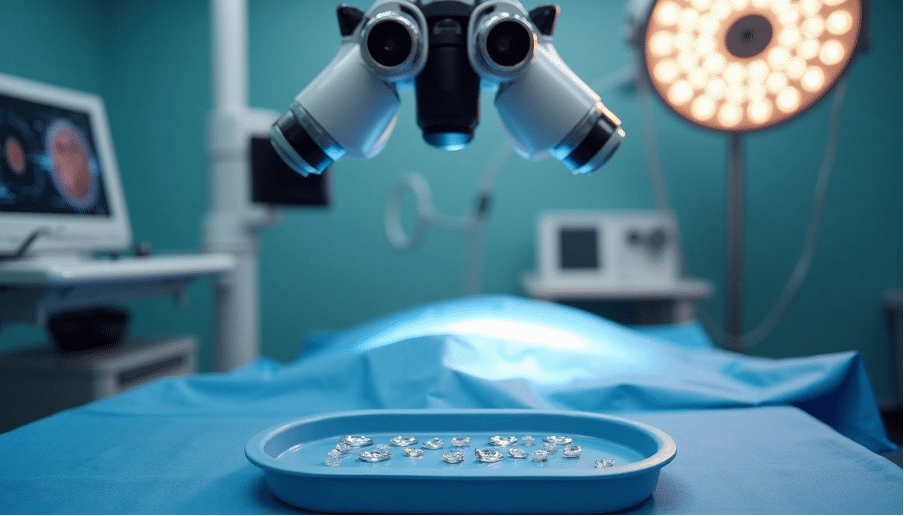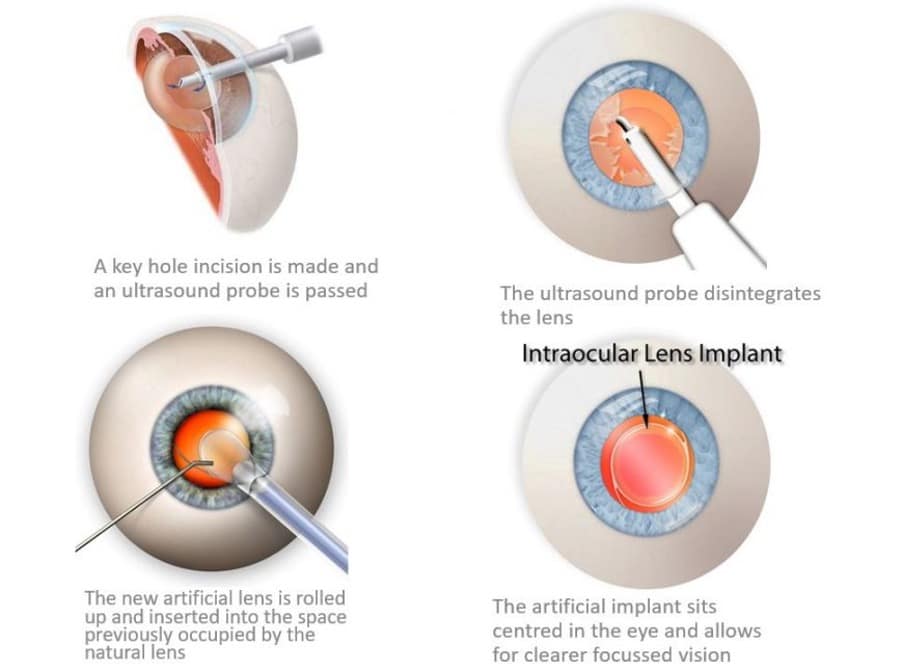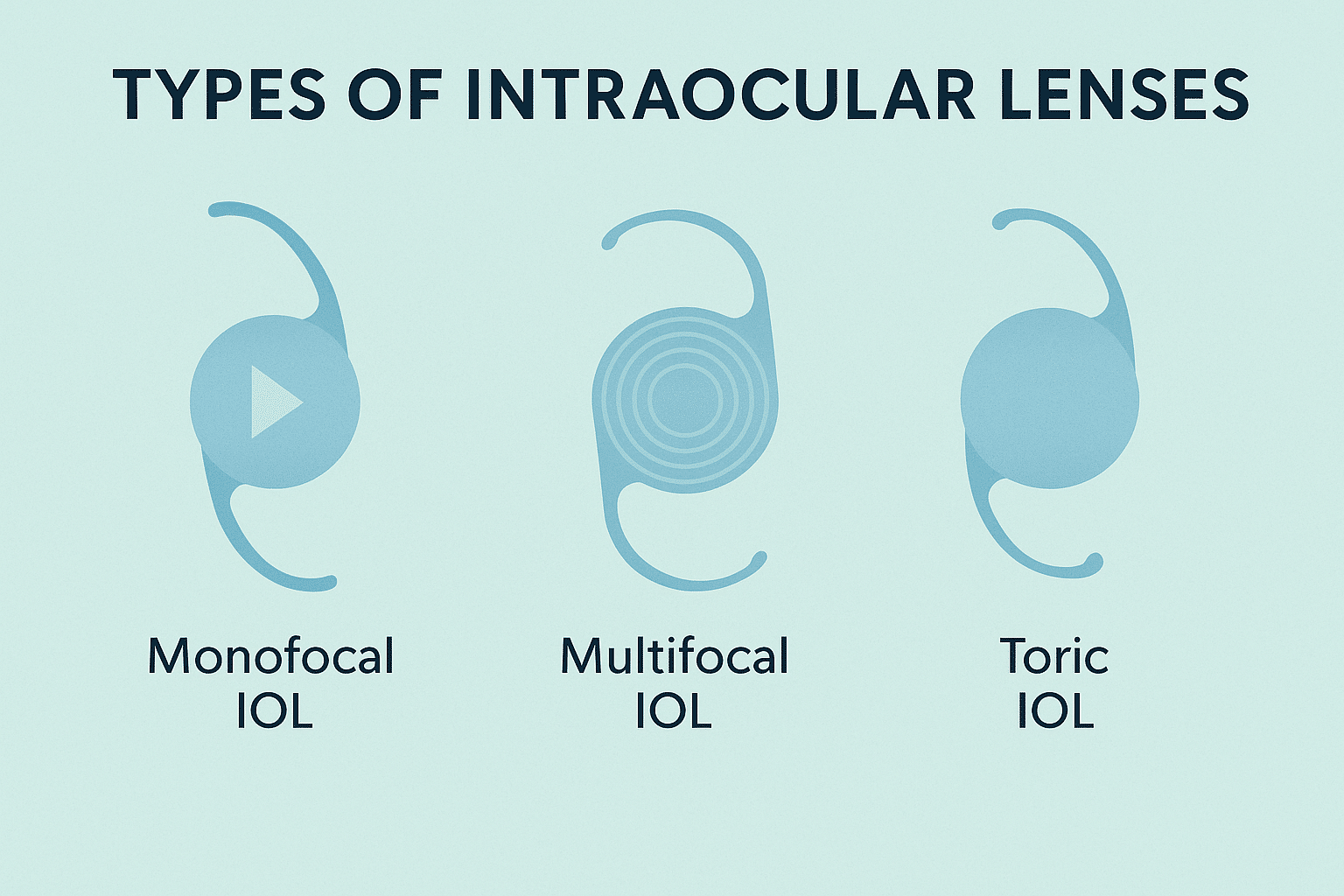The cost of refractive lens exchange in the UK ranges from £1,995 to £3,995 per eye with monofocal lenses. Patients who choose multifocal or trifocal options can expect to pay between £3,195 and £4,500 per eye. Lens replacement surgery ranks among the most common elective procedures worldwide, which makes this investment worthwhile.
UK patients should know that the surgery takes only 25–30 minutes and they can go home the same day. The results speak for themselves – 95% of patients don’t need glasses or contact lenses after the procedure. The remaining 5% might need them occasionally for certain activities. People over 40 who wear prescription glasses and meet specific medical criteria make the best candidates for this procedure.
This piece breaks down everything about refractive lens exchange costs. You’ll find details about price factors, available lens options, and the value you get from your investment. The guide helps you understand not just the costs involved but also the long-term benefits of the procedure.
What is refractive lens exchange and who is it for?

RLE offers a precise surgical solution to help you break free from glasses and contact lenses. The surgeon removes your eye’s natural lens and replaces it with an artificial intraocular lens (IOL) to fix various vision problems.
How it is different from cataract surgery
The surgical technique is similar, but RLE and cataract surgery serve different purposes. RLE surgeons replace a clear, healthy lens to fix refractive errors. Cataract surgery removes a cloudy, degraded lens that blocks vision. The patient’s starting vision quality creates another big difference. RLE patients can see well with glasses, but cataract patients struggle to see even with corrective eyewear. RLE remains an elective procedure that helps reduce dependence on glasses – making it more about lifestyle than medical need.
Ideal age and vision conditions
RLE works best if you’re over 40-45 years old, though some doctors suggest waiting until after 50. These age guidelines exist because:
- Your natural lens gets less flexible as you age and causes presbyopia (trouble focusing on close objects)
- Many older patients already show early signs of cataracts
- Lens replacement benefits increase as lens flexibility decreases
The procedure shows great results for people with presbyopia, moderate to high farsightedness, or thin corneas that rule out laser surgery. The best candidates have stable vision (unchanged prescription for two years or more) and healthy eyes without diseases that could affect the outcome. Today’s premium implants work like bifocal or trifocal glasses and correct vision at every distance. Between 80-93% of patients with trifocal implants don’t need glasses at all. About 95% of all patients need corrective eyewear much less often.
When RLE beats laser eye surgery
RLE has clear advantages over laser procedures in specific cases. It excels where LASIK struggles – especially with presbyopia. Laser procedures only reshape the cornea but can’t fix age-related near vision problems because they don’t address the ageing lens.
RLE stands out as the better choice if you have high refractive errors, especially significant long-sightedness, since LASIK results tend to backslide in these cases. It also provides an excellent option if you have thin corneas that make laser surgery too risky. Lens Replacement Surgery delivers stable, permanent vision correction that stays consistent over time. You’ll never develop cataracts in the future because your natural lens is gone – which means no cataract surgery later in life.
Precision Vision London’s costs vary based on your needs. Monofocal lenses start at £3,250 per eye, while multifocal toric lenses cost £4,500 per eye. Your individual vision assessment during consultation determines the best lens option.
How the procedure works step-by-step

A clear understanding of refractive lens exchange steps will help you prepare for this life-changing procedure. RLE uses a well-laid-out protocol that ensures the best results with minimal discomfort, unlike other surgical procedures.
Pre-surgery consultation and eye assessment
Your treatment plan starts with a detailed consultation at Precision Vision London. During your first assessment, specialists scan your eyes multiple times and give you a full eye examination to check if lens replacement surgery is right for you.
The assessment has these key parts:
- Biometry measurements to calculate your ideal lens power
- Corneal topography to map your eye’s surface
- Pupil dilation to get into your retina and lens
Your consultant will talk about the benefits and risks based on these results before creating your personalised treatment plan. Contact lens wearers need to stop using them at least two weeks before this assessment to get accurate measurements.
Surgery day: what to expect
You’ll get anaesthetic eye drops to numb your eyes on surgery day. Some patients might need a mild sedative to relax, but you’ll stay awake throughout. Some clinics let you treat both eyes on the same day, while others prefer a one-week gap between procedures.
The surgery follows these precise steps:
- Your surgeon makes a tiny cut (2-3mm) where your cornea meets the white of your eye. Then, they do a capsulotomy by removing a circular disc from the front membrane that covers your natural lens.
- The next step is phacoemulsification. Your natural lens breaks into pieces using ultrasound energy. These pieces turn to liquid and get removed through a vacuum system. Each eye takes about 15-30 minutes, and you won’t need stitches as the cut heals itself.
- After surgery, your eye gets covered with a protective shield for your trip home. You’ll need someone to drive you home since you can’t drive right after the procedure.
Lens insertion and recovery timeline
Your surgeon puts in the artificial intraocular lens (IOL) through the same small cut after removing your natural lens. The lens unfolds and sits securely in your lens capsule. Here’s what to expect during recovery:
Day 1: Your vision will be blurry with some discomfort. Your pupil stays dilated for 24-48 hours, which affects your vision temporarily. You’ll use anti-inflammatory and antibiotic eye drops to fight infection and reduce swelling.
Week 1: Your vision clears up by a lot. Most patients see better within 2-3 days as pupil dilation goes down. You’ll have a check-up within 24-48 hours after surgery.
Weeks 2-4: Your vision gets more stable. Most patients have great clarity by now, and any glare or halos start to fade.
1-3 Months: You’ll fully adapt to your new lenses with stable vision. Any night vision issues like glare or halos usually go away completely.
You should avoid swimming for about a week and contact sports for a month. You can start non-contact activities like walking almost right away. Most patients go back to driving and work within a few days after their surgeon gives the okay.
Types of lenses and how they affect cost
Your choice of lens plays a crucial role in visual outcomes and cost when you opt for refractive lens exchange. You need to pick the right lens based on your vision needs, lifestyle, and budget.

Monofocal lenses: simple but effective
Monofocal lenses offer the most straightforward solution that provides clear vision at one focal distance—usually set for distance vision. These lenses deliver excellent visual clarity and contrast sensitivity, which works well in low-light conditions. Precision Vision London charges £3250 per eye for monofocal lenses without astigmatism correction. You might still need reading glasses after the surgery since these lenses can’t adjust between distances. The reliability and lower cost make them a popular choice compared to advanced options.
Multifocal and trifocal lenses: for full-range vision
Multifocal and trifocal lenses help you break free from glasses at every distance. Trifocal lenses give you three clear focal points—reading distance, computer work range, and driving vision. Research shows that 97% of patients don’t need glasses after getting trifocal lenses. These advanced optical devices cost £3800 per eye at Precision Vision London. The innovative design splits incoming light to create multiple focus points, so you see clearly at different distances. The price reflects the sophisticated technology that reduces or eliminates your need for glasses.
Toric lenses: correcting astigmatism
Toric lenses fix both standard refractive errors and astigmatism—a condition where irregular corneal shape causes blurry vision. Each lens has different powers along various meridians that line up perfectly to fix your astigmatism. You’ll pay £3750 per eye for monofocal toric lenses and £4500 per eye for multifocal toric versions at Precision Vision London. The surgeon must align these lenses precisely with your corneal astigmatism axis. This extra precision makes the procedure more complex and explains the higher cost.
EDOF lenses: fewer visual disturbances
Extended Depth of Focus (EDOF) lenses bridge the gap between monofocal and multifocal options. These lenses create a continuous, extended focus range instead of separate focal points. They work best for intermediate and distance vision. Lab studies show that EDOF lenses give better optical quality than multifocal lenses and cause fewer problems like halos and glare. This makes them ideal if you worry about night vision but still want to reduce your dependence on glasses. The smart design helps you see computer screens clearly while maintaining good distance vision.
How much does refractive lens exchange cost in 2025?
Understanding the full cost of refractive lens exchange will help you make a smart decision about your vision. Your knowledge of the complete cost structure in 2025 can guide your choice about this life-changing procedure.
Precision Vision London pricing overview
Precision Vision London uses a simple pricing structure based on your choice of lens technology. The original consultation costs £300, which you must pay at booking (non-refundable). Monofocal lenses cost £3250 per eye without astigmatism correction. Monofocal toric lenses that correct astigmatism cost £3750 per eye.
People who want to avoid reading glasses can choose multifocal lenses. These lenses correct distance, intermediate and near vision at £3800 per eye. Multifocal toric lenses cost £4500 per eye. You’ll need to pay a deposit of £1250 per eye to book your treatment. This amount comes off your final bill.
Why prices vary between patients
Patient prices differ based on specific vision needs. Astigmatism requires specialised toric lenses that add about £500 to the base price. Your desire to be free from glasses at multiple distances also affects the cost. Multifocal options naturally cost more than single-vision lenses. Your eye’s anatomy determines which lens technologies suit you best. Some complex prescriptions need premium lens solutions that can increase your total investment.
Cost vs value: what are you really paying for?
Your investment covers more than just surgery fees. You get a detailed pre-operative assessment, the procedure, premium intraocular lenses, and follow-up visits. The lifetime savings on glasses, contact lenses and maintenance costs make refractive lens exchange a great long-term value. Many patients find freedom from visual aids priceless as it improves their quality of life daily. Sometimes, you might need additional procedures like YAG laser capsulotomy (costing £1000 per eye at Precision Vision London) months or years after surgery.
Ready to explore refractive lens exchange? Precision Vision London provides transparent UK pricing, full cost breakdowns, and personalised care. Book your consultation today to get your tailored quote.
What to expect after surgery and long-term value
Your expectations about refractive lens exchange surgery become clearer when you understand the recovery process and long-term outcomes. The success of your investment depends on how well you recover after the surgery.
Recovery and vision improvement timeline
Most patients follow a predictable healing pattern after refractive lens exchange. Your vision might be blurry and slightly uncomfortable for 1-2 days after surgery. This happens because your pupil stays dilated for 24-48 hours after the procedure.
Vision improves noticeably within 24 hours for most patients, but complete recovery takes about two weeks. Your surgeon will prescribe anti-inflammatory and antibiotic eye drops to help you heal faster. Vision quality might fluctuate during the first week as your eyes adapt to the new lenses. Vision usually stabilises between weeks 2-4, and most patients achieve excellent clarity. You’ll fully adapt to your new lenses within 1-3 months.
How long does lens replacement last?
Refractive lens exchange offers a permanent solution. The artificial intraocular lenses (IOLs) used in RLE last a lifetime, unlike natural lenses that deteriorate over time. Once healed, your vision correction should remain stable indefinitely.
But about 20% of patients develop posterior capsule opacification (PCO) – a clouding of the membrane behind the implanted lens. Precision Vision London offers a quick YAG laser capsulotomy procedure at £1000 per eye to fix this issue.
Will you still need glasses?
About 95% of patients can pass a driving eye test without glasses after recovery. Nearly 90% won’t need glasses or contact lenses for any activities. Premium multifocal lenses give great results—85% of patients are happy with their distance vision and 84% with mid-range vision. Near vision satisfaction reaches 74%, which shows impressive results.
Risks, side effects, and how common they are
Temporary side effects include dry eyes, light sensitivity, and blurred vision during recovery. Some patients see halos or glare around lights at night, but these effects usually fade over time. Clinical data shows that serious complications causing significant vision loss happen in about 1 in 500 cases. Rare but serious complications include retinal detachment and cystoid macular oedema.
The long-term satisfaction rate remains high at 88%, with patients reporting better quality of life years after surgery. These lasting results and high satisfaction rates show why refractive lens exchange is such an effective permanent vision solution.
Conclusion
Refractive lens exchange is a most important investment in your visual health and quality of life. Precision Vision London’s costs range from £3,250 per eye for monofocal lenses to £4,500 per eye for multifocal toric options. This procedure delivers remarkable value as a permanent solution. Most patients see excellent results within days and recover fully within 1-3 months after surgery. The treatment’s success speaks for itself – 95% of patients don’t need glasses for most activities afterward.
Your benefits go way beyond the reach and influence of simple vision correction. These artificial intraocular lenses last forever, which means you’ll never develop cataracts or face age-related lens problems again. Some patients might experience temporary side effects like dry eyes or night vision issues, but these typically clear up during recovery. A simple YAG laser treatment at £1,000 per eye can quickly restore clarity if posterior capsule opacification develops later.
Ready to learn about refractive lens exchange? Precision Vision London provides transparent UK pricing, detailed breakdowns, and personalised care that helps you make an informed choice. Your consultation awaits – book today to get your tailored quote.
Life changes dramatically when you no longer depend on glasses and contact lenses. You’ll save money on visual aids while enjoying exceptional convenience. The original cost might seem high, but this procedure offers exceptional long-term value through lasting results and improved quality of life. You won’t need future cataract surgery either. This lens replacement surgery offers a compelling solution with life-changing potential to suitable candidates over 40 who want reliable, permanent vision correction.
Key Takeaways
Understanding the true cost and value of refractive lens exchange helps you make an informed decision about this permanent vision correction solution.
- RLE costs range from £3,250-£4,500 per eye depending on lens type, with 95% of patients no longer needing glasses for most activities after surgery.
- Premium multifocal lenses provide all-distance vision whilst monofocal options require reading glasses, making lens choice crucial for your lifestyle needs.
- Recovery takes 1-3 months with vision improving within 24 hours, though temporary side effects like dry eyes and light sensitivity are common initially.
- Artificial lenses last a lifetime and prevent future cataracts, making RLE a permanent solution that eliminates ongoing eyewear costs and maintenance.
- Success rates are exceptionally high with serious complications affecting only 1 in 500 patients, whilst 88% report improved quality of life years after surgery.
The investment in RLE extends beyond immediate vision correction—it’s a lifetime solution that eliminates the progressive costs of glasses, contact lenses, and future cataract surgery whilst delivering the freedom and convenience that 95% of patients achieve.
FAQs
Q1. What is the typical cost of refractive lens exchange in the UK? Refractive lens exchange costs in the UK generally range from £3,250 to £4,500 per eye, depending on the type of lens chosen. Monofocal lenses are at the lower end of this range, while advanced multifocal or toric lenses for astigmatism correction are at the higher end.
Q2. How long does it take to recover from refractive lens exchange surgery? Most patients notice significant visual improvements within 24 hours after surgery. However, complete recovery typically takes about two weeks, with vision stabilising over 1-3 months. During this time, you’ll use prescribed eye drops and attend follow-up appointments to ensure proper healing.
Q3. Will I still need glasses after refractive lens exchange? Approximately 95% of patients can pass an eye test to driving standard without glasses after refractive lens exchange. About 90% won’t need glasses or contact lenses for any activities. However, the need for reading glasses may depend on the type of lens implanted during the procedure.
Q4. How long do the artificial lenses from refractive lens exchange last? The artificial intraocular lenses (IOLs) implanted during refractive lens exchange are designed to last a lifetime. Unlike your natural lens, these do not degrade over time, providing permanent vision correction. This also means you’ll never develop cataracts in the future.
Q5. What are the risks associated with refractive lens exchange? While refractive lens exchange is generally safe, there are some risks to consider. Common temporary side effects include dry eyes, light sensitivity, and blurred vision during recovery. The risk of serious complications resulting in significant vision loss is approximately 1 in 500. More serious but rare complications can include retinal detachment and cystoid macular oedema.
Authors & Reviewer
-
 Olivia: Author
Olivia: AuthorHi, I'm Olivia, a passionate writer specialising in eye care, vision health, and the latest advancements in optometry. I strive to craft informative and engaging articles that help readers make informed decisions about their eye health. With a keen eye for detail and a commitment to delivering accurate, research-backed content, I aim to educate and inspire through every piece I write.
-
 Dr. CT Pillai: Reviewer
Dr. CT Pillai: ReviewerDr. CT Pillai is a globally recognised ophthalmologist with over 30 years of experience, specialising in refractive surgery and general ophthalmology. Renowned for performing over 50,000 successful laser procedures.


